Establishing a Creative Hour for Kids
Post by Michelle Sterling of Avery and Augustine
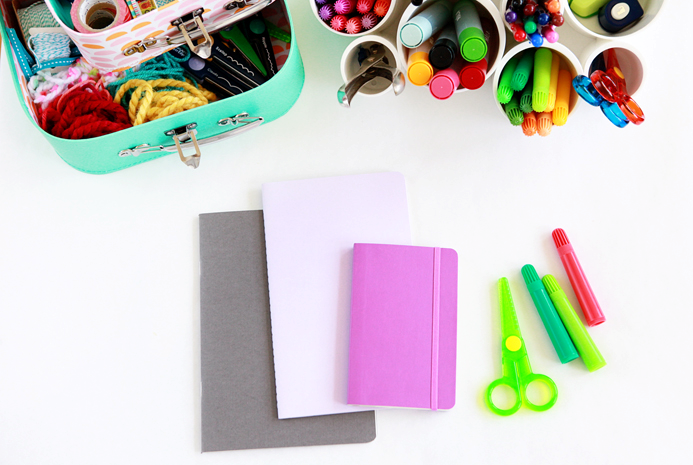
Summer is the perfect season to do something creative every day. Free, open and undirected time to be creative is so important for children so they can work out their ideas and experiment with different arts and crafts. You don’t have to necessarily change up supplies every day. It’s good for children to use the same tools (e.g., crayons) over and over again, finding different ways that they work and discovering new uses for them. When they have free rein with age-appropriate materials, they eventually master use of them and feel competent as individuals.
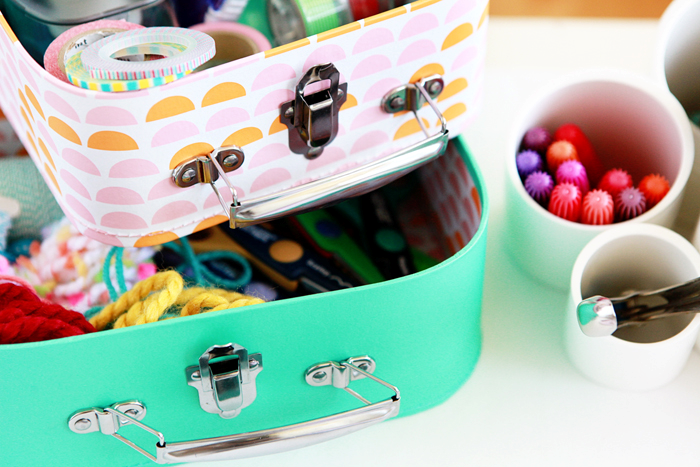
When it comes to young children and experiences with art, the operative word should be exploration. When children are creating and making art, they don’t have to fit into a mold, meet someone’s expectations or use supplies in a certain way — it’s all up to them. This way, children realize that their ideas and opinions are important. Also, consistently giving them free time to create allows them to think through ideas or concepts, rethink them, reimagine them or try them in a different way. They can problem-solve an idea that doesn’t quite work out how they had planned.
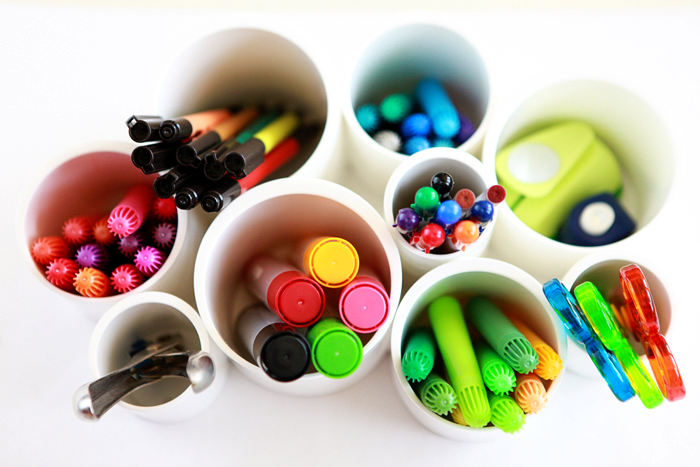
In all this, children are engaging in the creative process, building on their existing ideas, finding out what makes sense to them, experiencing trial and error, making mistakes and being okay with it. Children will see their ideas evolve and change from day to day. They will pull new inspiration from books, things they see and their experiences in the world into their work to build on their existing ideas, to create and recreate something. Given free time, children will be creative and learn to think creatively.
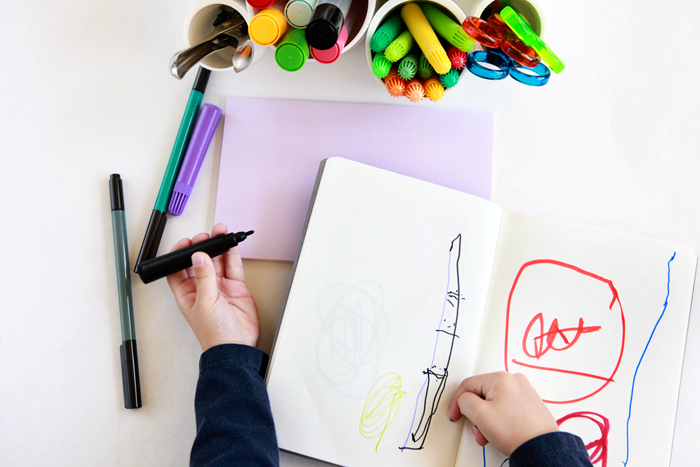
Now that summer is in full swing, we try to have a “creative hour” every day (at least an hour if not longer). Avery and Nate mostly use loose paper to draw and write on, but they sometimes also use blank notebooks, so I can date the art on each page and have it all in one nice, bound collection. It keeps their drawings in one place, they can flip through it without having to deal with loose papers flying out, and it makes it easier to archive on their bookshelves. Soon enough, a row of notebooks will spring up and we’ll be able to look through each one, seeing the progression of their lines, scribbles, styles and interests. This set of markers is brilliant–there are two of each color, which helps tremendously while children are in the “learning to share and take turns” stage.
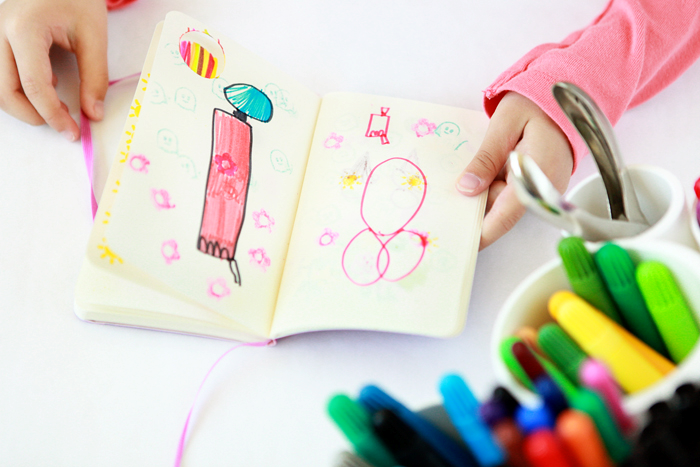
As everyone can attest to, making sure everything has its place is key to organization and general tidiness. I like these cubby cups because they keep supplies orderly and in one place. I can’t necessarily leave our art supplies out in the open like I’d like, because Nate does still need some supervision when using markers, etc. When Avery and Nate are done with their creative hour, I can grab the cups in one fell swoop (keeping everything together and sorted) and put them away out of reach. We store flat media like paper, card stock and stencils in clear envelopes and miscellaneous creative materials in these suitcases. Their cheery print peps up our collection of art supplies, for sure. We stack everything in this bin and it gets put away out of sight, ready for the creativity of tomorrow.
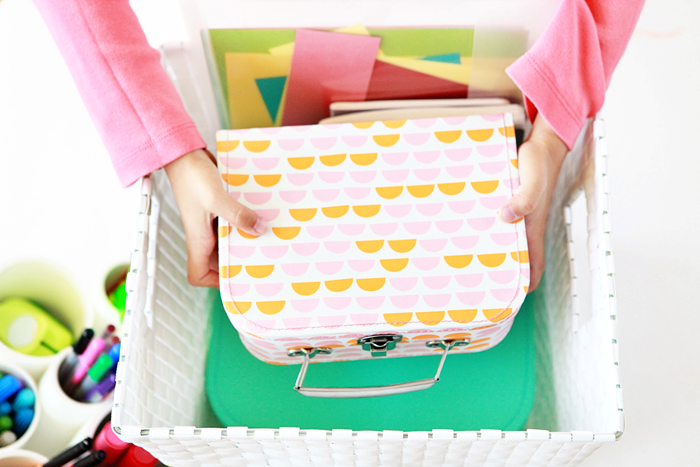
To read more about children and the creative process, check out early childhood author/educator Mary Ann Kohl’s blog.
Thanks to The Land of Nod for sending us the items for this post.
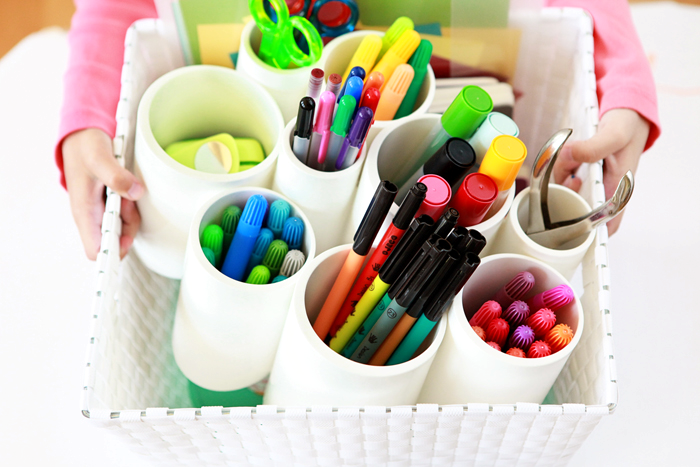
Post by Michelle Sterling of Avery and Augustine. You can see Michelle’s work and read about her two young children and their first forays in cooking, art and everything in between at Avery and Augustine.